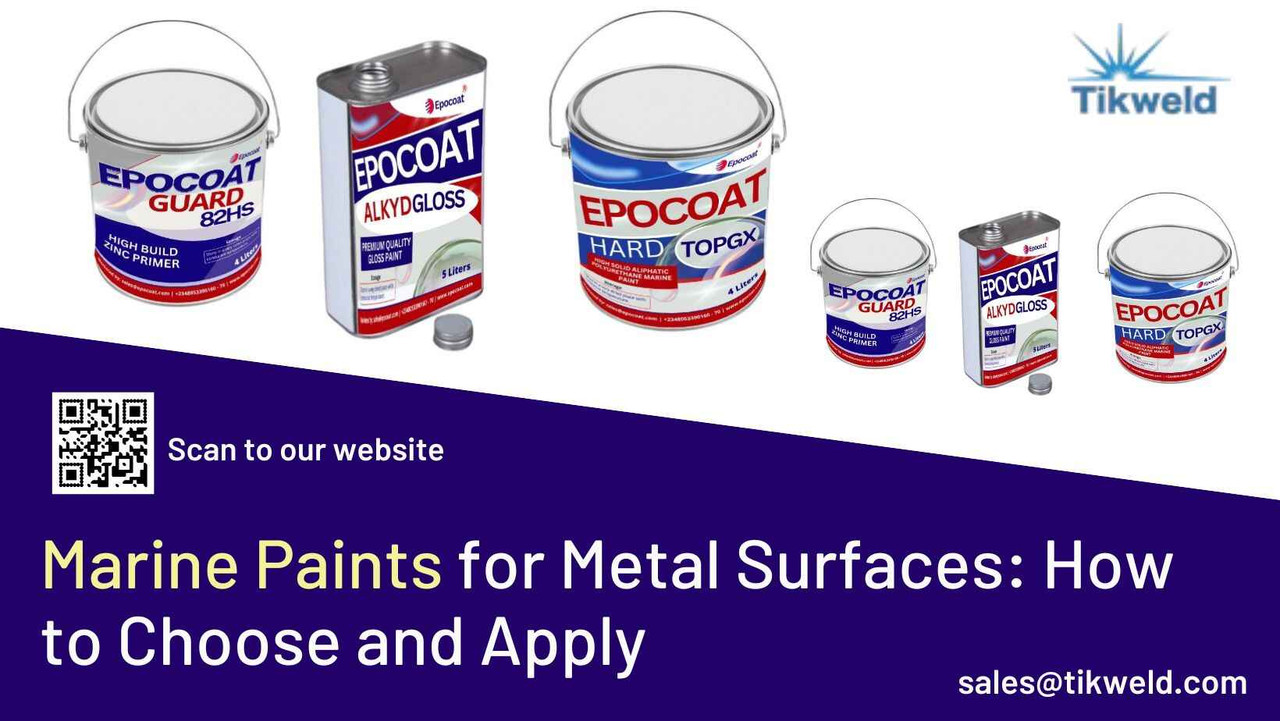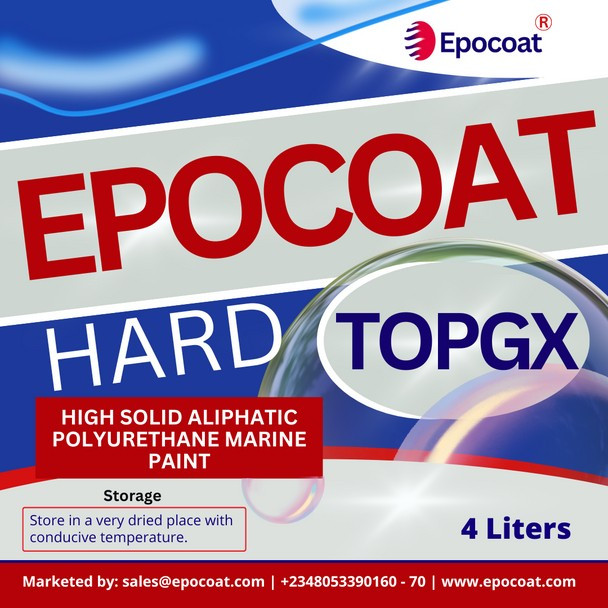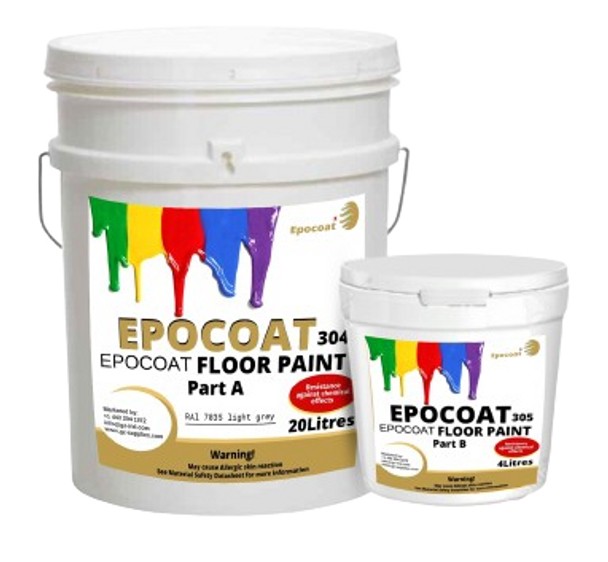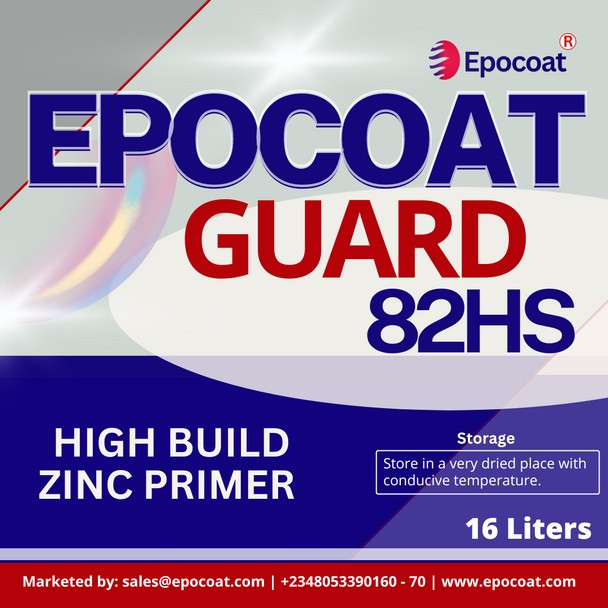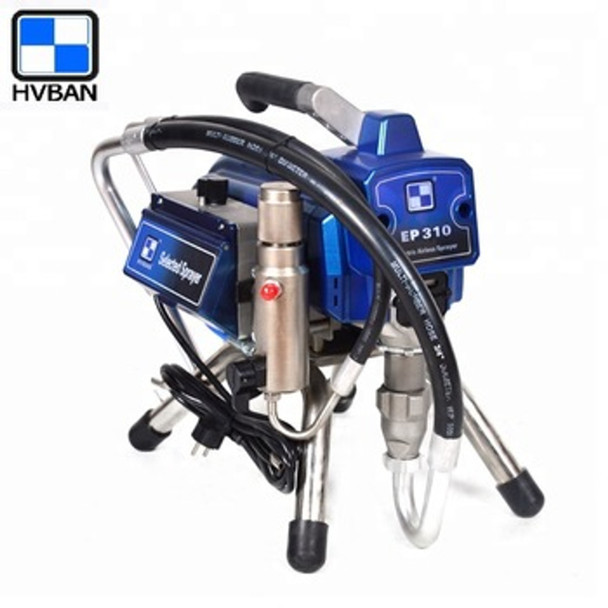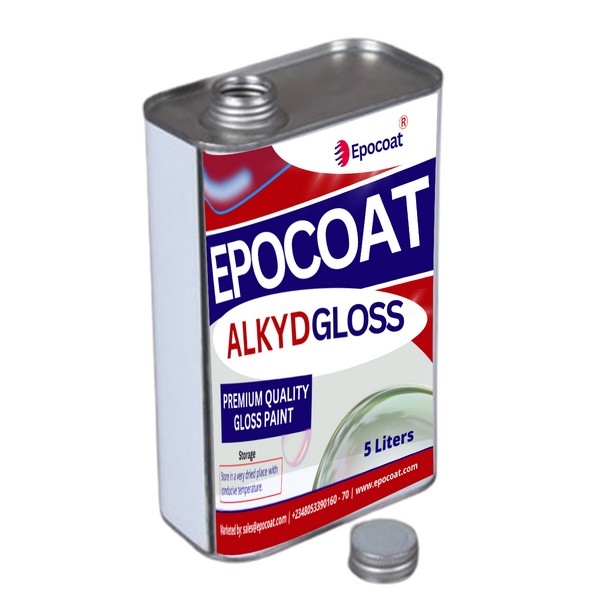Marine Paints for Metal Surfaces: How to Choose and Apply
Key Takeaway
- Durability and Protection: Marine paints protect metal surfaces from harsh environmental factors like saltwater, UV rays, and corrosion, extending their lifespan.
- Types of Marine Paints: Epoxy paints are ideal for submerged surfaces due to their chemical resistance, while polyurethane offers a smooth, attractive finish for topside applications.
- Surface Preparation: Proper cleaning, sanding, and priming of metal surfaces are crucial to ensuring the paint adheres well and lasts longer.
Introduction
Marine environments are among the harshest conditions for metal surfaces, with constant exposure to moisture, salt, and varying temperatures. Metal structures like ships, boats, and offshore platforms face corrosion and wear, making protection essential. This is where marine paints play a vital role. Designed to provide a protective coating that withstands the rigors of the sea, marine paints offer corrosion resistance and durability.
Choosing the right paint is essential for long-lasting protection and performance. Epoxy paints are ideal for submerged surfaces due to their excellent durability and chemical resistance, making them perfect for boat hulls and underwater structures. Polyurethane paints, on the other hand, offer a smooth, glossy finish, making them suitable for topside applications where aesthetics are important.
Anti-fouling paints prevent marine organisms like barnacles and algae from adhering to surfaces, reducing drag and improving fuel efficiency for vessels. For maximum protection, using zinc-rich primers ensures excellent adhesion and prevents rust on metal surfaces before applying the topcoat. Proper surface preparation and maintenance, including cleaning and priming, are key to ensuring the longevity and effectiveness of marine coatings.
Epocoat Hardtop GX (High Solid Aliphatic Polyurethane Marine Paint)
Types of Marine Paints for Metal Surfaces
When choosing marine paint, understanding the different types available is critical. Each type serves a unique purpose, offering protection based on the application and exposure conditions.
1. Epoxy Paints
Epoxy paints are widely known for their incredible durability and excellent adhesion to metal surfaces. They form a tough, thick barrier that protects against corrosion, chemicals, and physical damage. This makes epoxy paints ideal for underwater portions of ships, hulls, and metal structures constantly exposed to saltwater. However, epoxy paints may yellow over time when exposed to sunlight, making them more suitable for areas below the waterline.
2. Polyurethane Paints
Polyurethane paints are well-regarded for their UV resistance and ability to retain gloss over time. They offer a smoother finish than epoxy paints, making them ideal for above-water applications, such as the topsides of boats. Polyurethane provides a protective barrier against weathering and mechanical abrasion while maintaining its appearance even in harsh sunlight.
3. Anti-Fouling Paints
Anti-fouling paints are specialized coatings used below the waterline to prevent the accumulation of marine organisms like barnacles and algae. These paints help improve vessel performance by reducing drag and saving fuel costs. Anti-fouling paints are especially crucial for ships and boats that remain in the water for extended periods.
4. Zinc-Rich Primers
Zinc-rich primers are designed to act as sacrificial layers that protect metal surfaces from corrosion. They are commonly applied to metal surfaces as an undercoat before the final layer of paint. Zinc-rich primers are highly effective in providing long-term corrosion protection and are widely used in marine environments for their rust-inhibiting properties.
EPOCOAT 304/305 Floor Paint
Factors to Consider When Choosing Marine Paint
When selecting marine paint for metal surfaces, several factors must be considered to ensure the paint performs effectively in the intended environment.
1. Metal Type
Different types of metals, such as steel and aluminium, react differently to marine conditions. Choosing the right paint depends on the metal type, as certain paints adhere better to specific metals.
2. Exposure Conditions
Above-water and below-water applications require different types of paint. Above-water surfaces need UV resistance and a glossy finish, while submerged surfaces must have excellent corrosion resistance and anti-fouling properties to minimise marine growth.
3. Application Method
The method of applying the paint is crucial. Some marine paints are best applied using a spray gun, while others can be brushed or rolled. Selecting paint compatible with your application method ensures smooth and even coverage.
4. Environmental and Regulatory Considerations
Environmental concerns have led to the development of eco-friendly marine paints that reduce harmful emissions and pollutants. Choosing paints that comply with environmental regulations is critical, especially for areas where environmental standards are strictly enforced.
Epocoat guard 82 HS (High Build Zinc Primer)
How to Apply Marine Paint on Metal Surfaces
Proper application is key to maximizing the effectiveness of marine paint. A few steps must be followed to ensure the metal surface is adequately prepared and the paint adheres well for long-term protection.
1. Surface Preparation
Before applying any paint, the metal surface must be free of rust, old paint, and contaminants. Sandblasting or chemical cleaning methods are often used to prepare metal surfaces, ensuring a clean and smooth base for the primer and paint to adhere to.
2. Primer Application
After surface preparation, applying a suitable primer is essential to ensure proper adhesion of the marine paint. A zinc-rich primer is often recommended for metal surfaces, as it helps prevent rust and corrosion. The primer should be applied evenly, covering all areas of the metal to create a protective base layer.
3. Paint Application Techniques
Depending on the type of marine paint being used, different application techniques can be employed. For epoxy or polyurethane paints, using a spray gun is often the best option for an even finish, especially on large surfaces. However, brushes or rollers can also be used for smaller areas or detailed work. The paint should be applied in thin, even coats, allowing ample drying time between each layer to ensure durability and proper adhesion.
4. Curing and Maintenance
Once the final coat of marine paint has been applied, it’s essential to allow enough time for the paint to cure properly. This curing period can range from a few hours to several days, depending on the type of paint and the environmental conditions. Regular maintenance, including cleaning and periodic inspections, can help identify any signs of wear or damage, allowing for prompt touch-ups or reapplication of protective coatings.
Airless Sprayer HVBAN EP310
Applications of Marine Paint in Nigeria
Marine paints are used in various sectors in Nigeria, particularly in industries that operate in coastal and offshore environments. Below are some common applications:
1. Ships and Boats
Marine paints are critical for protecting the hulls and topsides of ships and boats. Epoxy and anti-fouling paints are typically used to ensure long-lasting protection against corrosion and marine growth, while polyurethane provides an attractive finish for above-water areas.
2. Offshore Platforms
In Nigeria’s oil and gas industry, offshore platforms must withstand harsh marine conditions. Marine paints provide essential protection for metal surfaces exposed to saltwater and extreme weather, extending the life of these structures and reducing maintenance costs.
3. Coastal Buildings and Infrastructure
Coastal buildings and metal structures, such as bridges, also benefit from marine paints. These protective coatings ensure that metal surfaces remain free from rust and degradation, even when exposed to the harsh marine climate of Nigeria’s coastal regions.
Benefits of Using Marine Paint for Metal Surfaces
1. Long-lasting Protection: Marine paints provide durable protection for metal surfaces exposed to harsh environmental conditions, such as saltwater, humidity, and extreme temperatures. By forming a strong barrier, these paints prevent corrosion, rust, and surface deterioration, ensuring the longevity of boats, ships, offshore platforms, and other metal structures.
2. Cost-effectiveness: Investing in high-quality marine paints can result in significant long-term savings. Regular maintenance and proper coatings help reduce the need for frequent repairs or replacement of metal surfaces, minimizing costs associated with rust damage and structural failure.
3. Environmental Resistance: Marine paints are formulated to resist environmental factors like UV radiation, temperature fluctuations, and marine organisms. Anti-fouling paints, in particular, prevent barnacles and algae from adhering to boat hulls and offshore structures, enhancing efficiency and reducing fuel consumption for vessels.
4. Improved Aesthetics: Apart from protection, marine paints also improve the visual appeal of metal surfaces. High-quality finishes, such as those provided by polyurethane marine paints, offer a sleek, glossy appearance, making them ideal for vessels and coastal infrastructure.
Epocoat Alykd Gloss
Frequently Asked Questions
1. What is the difference between epoxy and polyurethane marine paint?
Epoxy paint is known for its excellent durability and chemical resistance, making it suitable for submerged surfaces. Polyurethane, on the other hand, offers a smoother, more attractive finish, making it ideal for topside applications where appearance matters.
2. How often should marine paint be reapplied?
The frequency of reapplication depends on environmental conditions and usage. Typically, marine paint on metal surfaces needs reapplication every 2 to 5 years to maintain optimal protection, though anti-fouling paints may require annual maintenance.
3. Can marine paints be used on any metal surface?
Yes, marine paints are suitable for various metal surfaces, including steel and aluminum. However, surface preparation, such as cleaning and priming, is essential to ensure proper adhesion and durability.
4. How do I choose the right primer for marine paints?
For metal surfaces, a zinc-rich or epoxy-based primer is recommended as it helps to prevent rust and enhances the bonding of the topcoat.
5. What environmental factors should I consider when selecting marine paint?
You should consider factors like exposure to saltwater, UV radiation, temperature variations, and the risk of corrosion. Depending on these factors, you can choose paints that offer specific resistance, such as anti-fouling or high UV protection.
Related Articles
The Best Marine Paints and coatings for Metal surfaces
The Toughest Marine Paints For Metal and Steel
Readers Also Watched...
Conclusion
Marine paints are essential for protecting metal surfaces from the harsh conditions of marine environments, providing both durability and aesthetic appeal. By selecting the right type of paint, such as epoxy for underwater protection or polyurethane for a smooth finish, you can extend the lifespan of vessels, offshore platforms, and coastal structures. Proper surface preparation, application techniques, and regular maintenance are key to ensuring long-lasting protection. For the best results in Nigeria’s coastal and offshore industries, high-quality marine paints are a worthwhile investment, helping to save costs on repairs and improve operational efficiency.
Protect your metal surfaces with high-quality marine paints fromTikweld Welding Supplies. Browse through our wide selection of epoxy, polyurethane, and anti-fouling paints designed to withstand Nigeria’s harsh marine conditions. Get the best products for long-lasting durability and aesthetic appeal for your marine equipment today!

